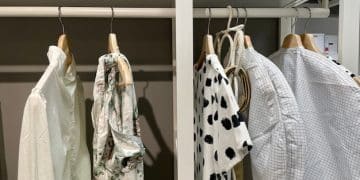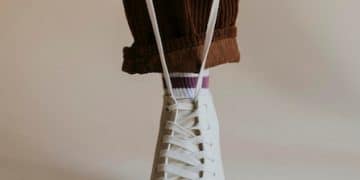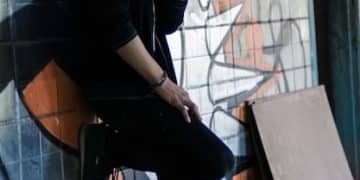Fashion Drop Authentication: How to Spot Fakes and Stay Safe
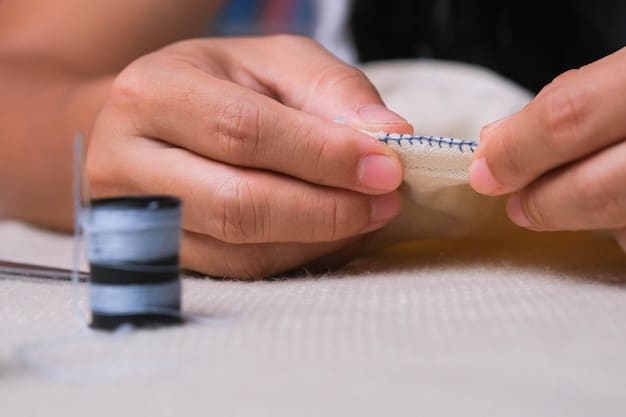
Fashion Drop Authentication is crucial in the resale market to protect buyers from counterfeits and scams, ensuring the authenticity and value of desired items.
In the fast-paced world of fashion drops and resale markets, knowing how to perform fashion drop authentication is essential to protect yourself from counterfeit items and scams.
Understanding the Fashion Drop Phenomenon
Fashion drops have revolutionized how limited-edition clothing and accessories are released, creating hype and exclusivity. However, this frenzy has also attracted counterfeiters looking to profit from unsuspecting buyers.
Understanding the landscape of fashion drops is the first step in protecting yourself. Knowing how legitimate drops operate and the typical security measures brands implement can help you spot potential scams.
What are Fashion Drops?
Fashion drops involve the release of limited quantities of highly coveted items, often announced with little notice. This scarcity drives demand and creates a resale market where prices can skyrocket.
The Rise of the Resale Market
The resale market has become a significant part of the fashion industry, providing access to sold-out items and vintage pieces. While it offers opportunities for both buyers and sellers, it also presents risks of encountering counterfeit goods.
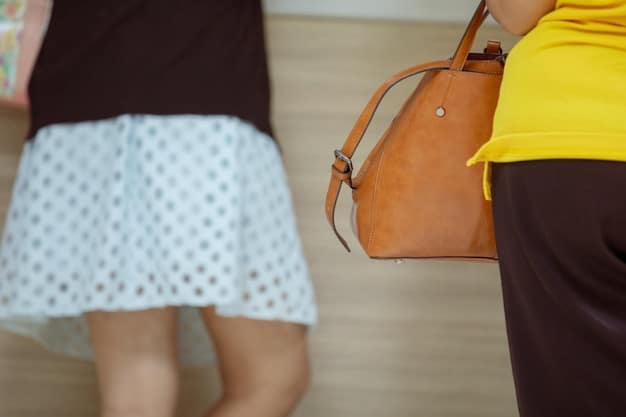
To navigate this complex environment safely, you need to be vigilant and informed. Educate yourself about fashion drop authentication to avoid falling victim to fraud.
- Research the Brand: Familiarize yourself with the brand’s history, design elements, and authentication markers.
- Stay Updated: Follow fashion news and forums to stay informed about new scams and authentication tips.
- Use Trusted Platforms: Buy and sell through reputable platforms that offer authentication services.
In conclusion, understanding the dynamics of fashion drops and the resale market is crucial for protecting yourself from scams. By staying informed and vigilant, you can confidently navigate this exciting but risky landscape.
Common Counterfeit Tactics in Fashion Drops
Counterfeiters are constantly evolving their tactics to create increasingly convincing fakes. To protect yourself, it’s essential to understand the common methods they use.
Recognizing these tactics will help you identify potential red flags and avoid purchasing counterfeit items. Being aware of these methods is a crucial step in fashion drop authentication.
Poor Quality Materials
One of the most common signs of a counterfeit item is the use of inferior materials. Counterfeiters often cut corners to reduce costs, resulting in products that lack the quality and durability of genuine items.
Inconsistent Stitching and Construction
Genuine designer items are known for their precise stitching and construction. Counterfeit items often have sloppy stitching, uneven seams, and other construction flaws that are easy to spot upon close inspection.
Always examine the stitching, hardware, and overall construction of the item. These details can reveal crucial differences between a genuine and a fake product and are vital components of fashion drop authentication.
- Check Stitching: Look for even, tight stitches without loose threads.
- Examine Hardware: Ensure hardware is of high quality, properly aligned, and matches the brand’s standard.
- Assess Construction: Look for symmetrical and well-constructed seams and edges.
In conclusion, understanding the common tactics used by counterfeiters is essential for effective fashion drop authentication. By paying close attention to materials, stitching, and construction, you can protect yourself from purchasing fake items.
Key Authentication Markers to Look For
Every brand has unique authentication markers that distinguish their products from counterfeits. Knowing these markers is essential for effective fashion drop authentication.
These markers can include specific logos, serial numbers, and design details. Becoming familiar with these elements will help you quickly identify fake items.
Logos and Branding
Logos and branding are often the first things counterfeiters try to replicate. However, subtle differences in font, size, and placement can reveal a fake.
Serial Numbers and Authenticity Codes
Many luxury brands include serial numbers or authenticity codes on their products. These codes can be used to verify the authenticity of the item through the brand’s website or customer service.

Check for unique identifiers such as security labels, holograms, or RFID tags. These markers are often difficult for counterfeiters to replicate, making them valuable tools for fashion drop authentication.
- Verify Logos: Compare the logo to official brand references, checking for inconsistencies.
- Check Serial Numbers: Look up the serial number on the brand’s website or contact customer service for verification.
- Examine Security Features: Look for holograms, security labels, and other unique identifiers that are hard to replicate.
In conclusion, understanding the key authentication markers specific to each brand is vital for successful fashion drop authentication. By paying close attention to logos, serial numbers, and security features, you can confidently identify genuine items.
Tools and Resources for Fashion Drop Authentication
Various tools and resources can aid in the fashion drop authentication process. Leveraging these resources can enhance your ability to spot fakes.
From authentication websites to expert services, these tools can provide valuable insights and assistance in verifying the authenticity of fashion items.
Online Authentication Services
Several online services specialize in authenticating luxury goods. These services often employ experts who can assess the authenticity of an item based on photographs and descriptions.
Authentication Apps
Authentication apps use AI and machine learning to analyze images of fashion items and identify potential fakes. While not foolproof, these apps can provide a quick preliminary assessment.
Utilize online communities and forums dedicated to fashion enthusiasts as valuable resources for fashion drop authentication. Sharing information and experiences with others can enhance your knowledge and awareness of counterfeit tactics.
- Use Authentication Websites: Submit photos and descriptions to reputable online authentication services for expert review.
- Try Authentication Apps: Use AI-powered apps to conduct preliminary checks for potential fakes.
- Join Online Communities: Share information and experiences with other fashion enthusiasts in dedicated forums.
In conclusion, leveraging the available tools and resources can significantly improve your ability to perform fashion drop authentication. By utilizing online services, authentication apps, and online communities, you can enhance your knowledge and protect yourself from counterfeit items.
Safe Practices for Buying and Selling in Resale Markets
When buying or selling in resale markets, adopting safe practices can minimize the risk of encountering counterfeit items or falling victim to scams. Practicing fashion drop authentication techniques is key.
These practices include using secure payment methods, scrutinizing seller reviews, and adhering to platform guidelines. These steps can help ensure a safe and positive experience.
Use Secure Payment Methods
Always use secure payment methods such as PayPal, which offers buyer protection. Avoid using cash or wire transfers, which offer little to no recourse in case of fraud.
Check Seller Reviews and Ratings
Before making a purchase, carefully review the seller’s ratings and reviews. Look for consistently positive feedback and be wary of sellers with little or no history.
Adhere to platform guidelines to minimize the risk of fraud. Report suspicious activity and collaborate with platform authorities to combat counterfeit activities and ensure fashion drop authentication standards are upheld.
- Use Secure Payment Methods: Opt for payment platforms with buyer protection policies.
- Check Seller Reviews: Scrutinize seller ratings and feedback for any red flags.
- Adhere to Platform Guidelines: Follow the platform’s safety protocols and report any suspicious behavior.
In conclusion, adopting safe practices when buying and selling in resale markets is essential for protecting yourself from fraud. By using secure payment methods, checking seller reviews, and adhering to platform guidelines, you can minimize your risk and enjoy a secure transaction.
Legal Recourse and Reporting Counterfeits
If you suspect you have purchased a counterfeit item, taking appropriate legal action and reporting the incident can help protect yourself and others. Supporting efforts in fashion drop authentication is crucial.
These actions can also help combat the production and sale of counterfeit goods, contributing to a safer marketplace for all consumers.
Contact the Seller and Platform
Begin by contacting the seller and the platform through which you made the purchase. Explain the situation and provide evidence that the item is counterfeit. Many platforms have procedures for handling counterfeit claims and may offer a refund.
Report to Law Enforcement
Report the incident to law enforcement agencies, such as the Federal Trade Commission (FTC) in the United States. Providing detailed information about the seller and the item can help them investigate and take action against counterfeiters.
Protect your financial information and take steps to assist others in preventing further fraud. Engage in community efforts to raise awareness about fashion drop authentication and the dangers of counterfeit goods.
- Contact Seller and Platform: Report the counterfeit item and seek a refund or resolution.
- Report to Law Enforcement: File a report with agencies like the FTC to aid in investigations.
- Protect Your Financial Information: Take steps to secure your accounts and prevent future fraud.
In conclusion, taking legal recourse and reporting counterfeit incidents is crucial for protecting yourself and combating the trade in fake goods. By contacting the seller, reporting to law enforcement, and protecting your financial information, you can contribute to a safer and more transparent marketplace.
| Key Point | Brief Description |
|---|---|
| 🔍 Authentication Markers | Look for unique logos, serial numbers, and security features. |
| 🛡️ Secure Payments | Use secure payment methods like PayPal for buyer protection. |
| 🧐 Check Reviews | Review seller ratings for positive feedback and history. |
| 🚨 Report Counterfeits | Report fake items to the seller, platform, and law enforcement. |
FAQ
▼
Fashion drop authentication is the process of verifying the genuineness of limited-edition fashion items. It involves examining various markers to distinguish authentic products from counterfeits in resale markets.
▼
Authentication is key to protecting buyers from scams and fake items. Authentic items hold value. Authentication ensures that buyers are getting what they expect when they purchase apparel.
▼
Common signs include poor-quality materials, inconsistent stitching, incorrect logos, and missing serial numbers. Always compare the item to official brand references and inspect its construction.
▼
You can use online authentication services, authentication apps, and online communities. Professional services employ brand experts. Apps utilize AI to assess items. Communities share information.
▼
Contact the seller and the platform immediately. Report the item as counterfeit. Open a dispute. Provide evidence. And if needed report it to law authorities right away. The sooner, the faster you will likely get your money back.
Conclusion
Protecting yourself from counterfeits and scams in the fashion drop resale market requires vigilance, knowledge, and the use of available resources. By understanding authentication markers, employing safe purchasing practices, and knowing how to report fraud, you can confidently navigate the resale landscape and ensure the authenticity of your fashion investments.


